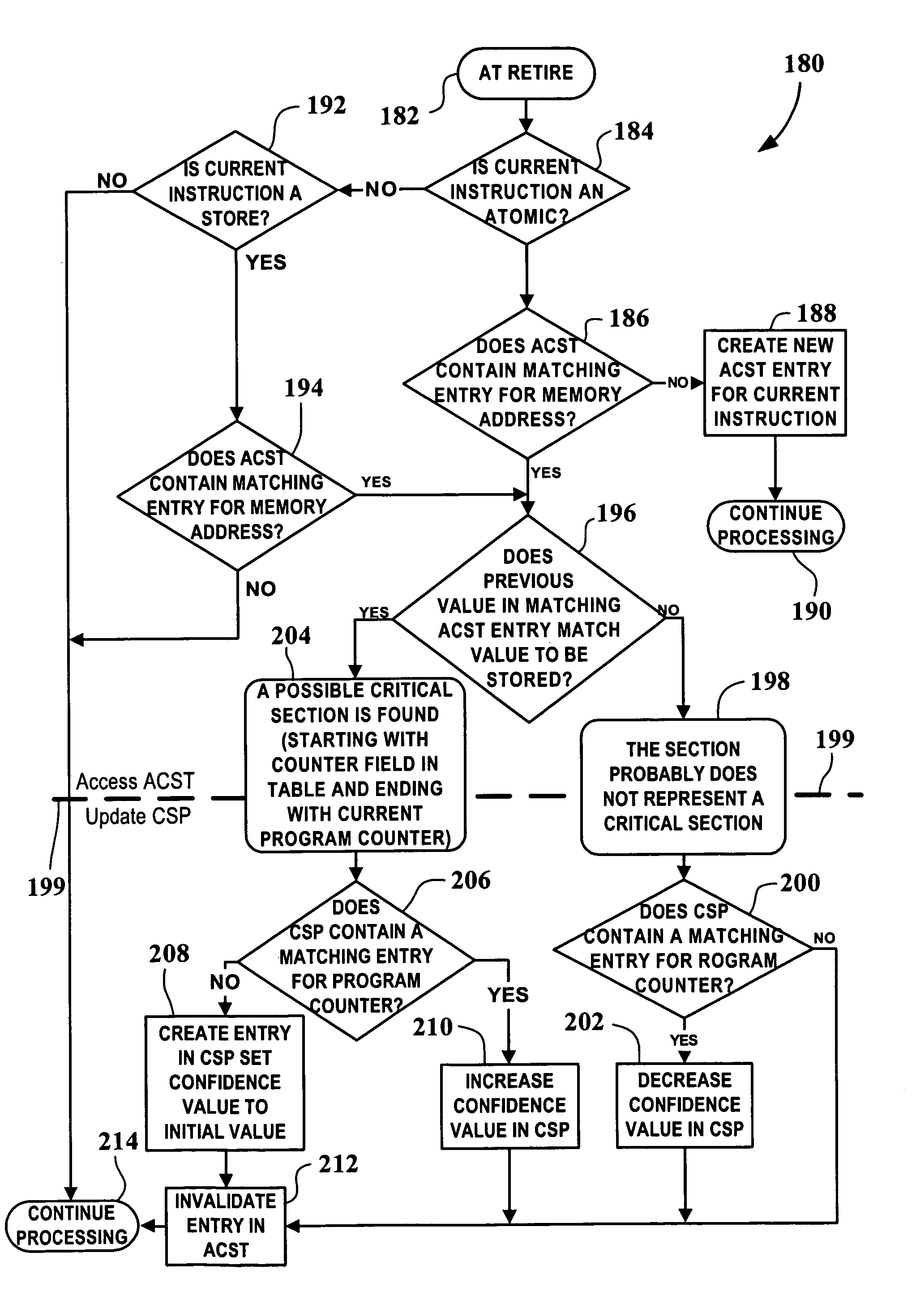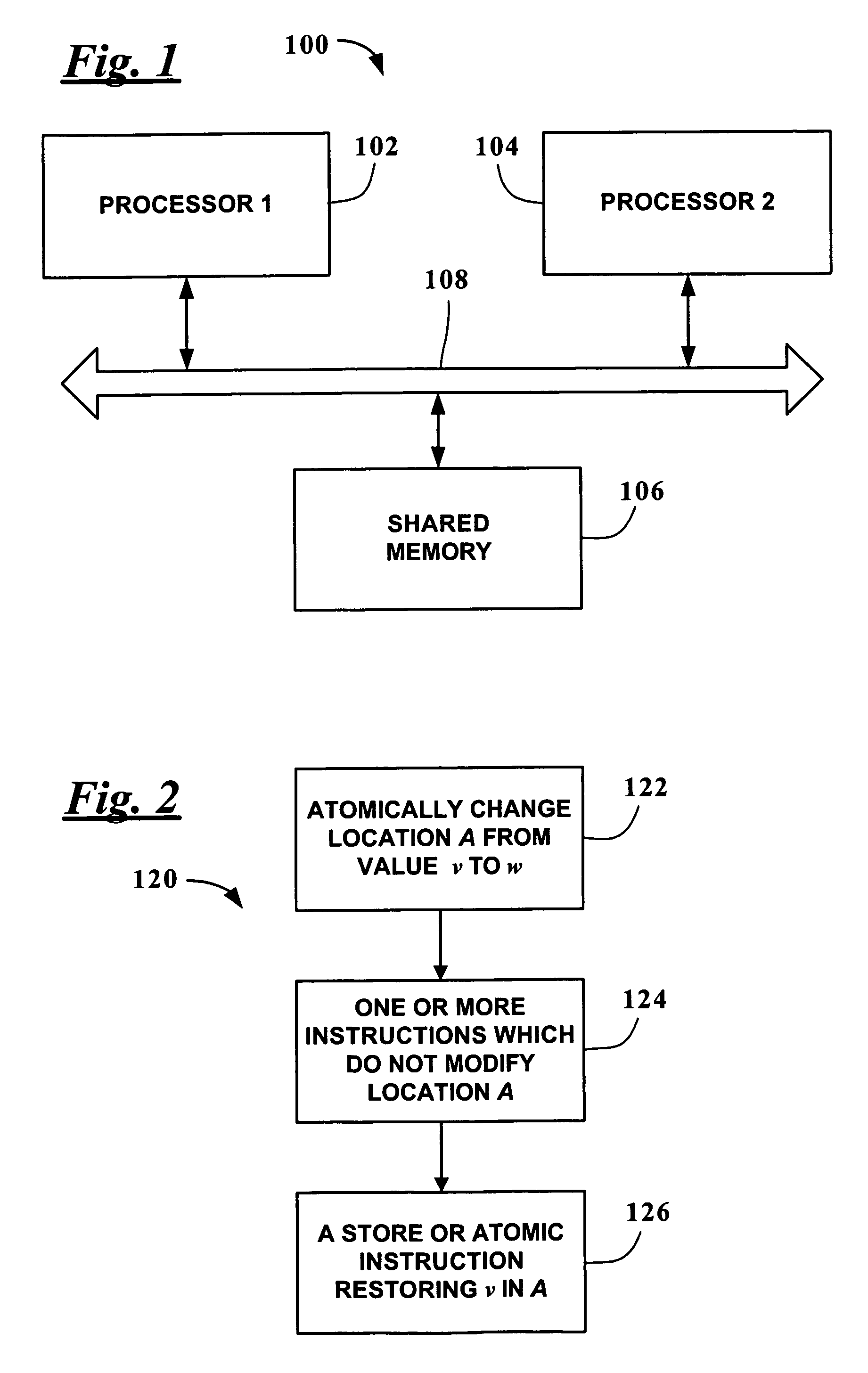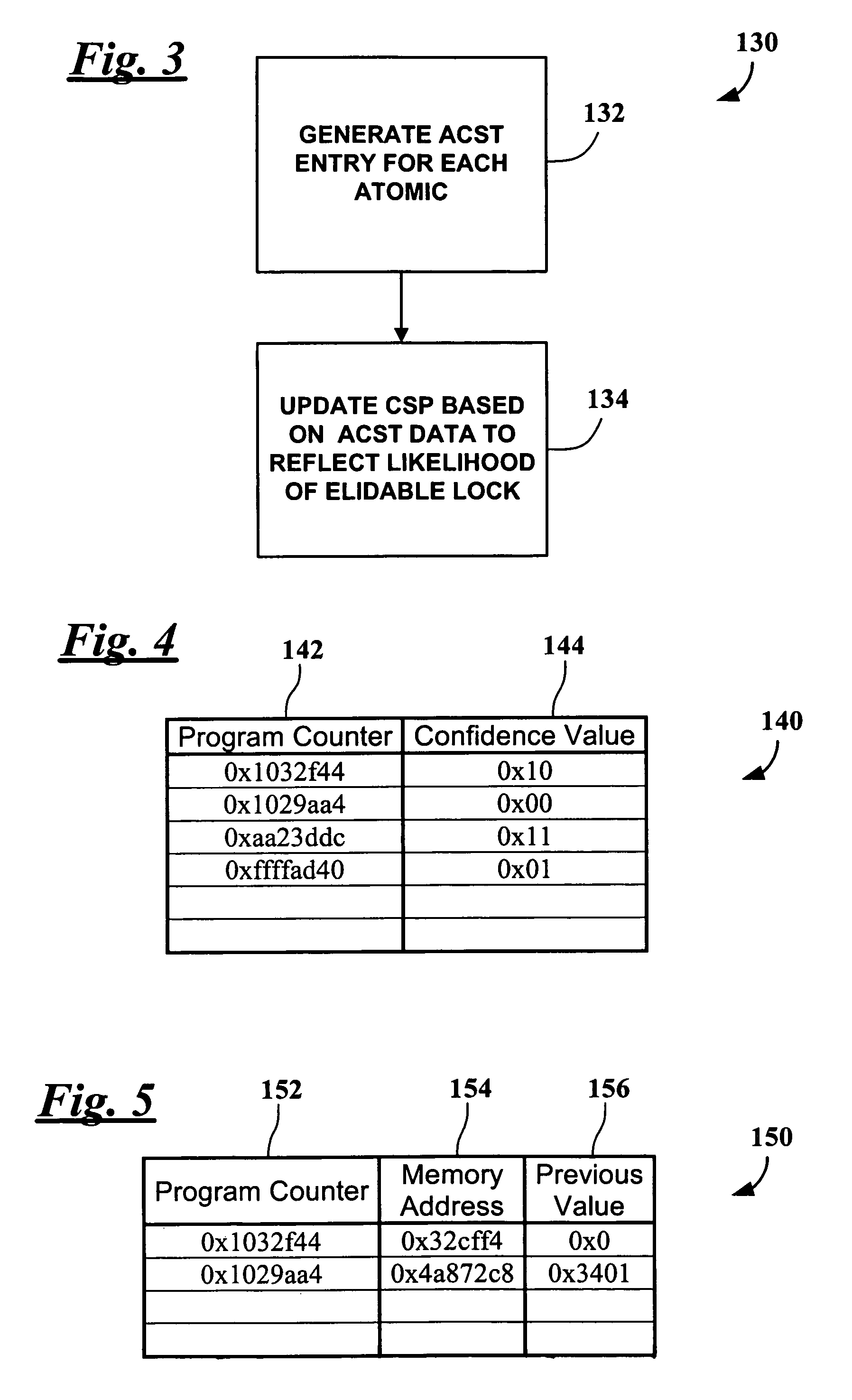Method and apparatus for critical section prediction for intelligent lock elision
a critical section and lock technology, applied in the field of microprocessor architecture, can solve the problems of reducing the performance of multi-threaded applications, increasing the potential speed, and high speed
- Summary
- Abstract
- Description
- Claims
- Application Information
AI Technical Summary
Benefits of technology
Problems solved by technology
Method used
Image
Examples
Embodiment Construction
[0034]The invention relates to a method of identifying and targeting suitable critical sections for intelligently eliding exclusive locks. FIG. 1 shows computer system 100 comprising a first processor 102 and a second processor 104. Each processor 102, 104 is in communication with shared memory 106 via, for example, a bus 108. To prevent collisions when processors 102, 104 simultaneously access the same memory location, programmers will place code that could otherwise cause collisions within an exclusive lock.
[0035]FIG. 2 shows a flowchart 120 describing an instruction pattern having atomic / store instruction pairs that suggests the presence of an exclusive lock in code. An exclusive lock is generally identifiable by an instruction that atomically changes a location A in memory from a value v to a value w shown by block 122; one or more instructions which do not modify location A as shown by block 124; and a store or atomic instruction that restores value v in A as shown by block 126...
PUM
 Login to View More
Login to View More Abstract
Description
Claims
Application Information
 Login to View More
Login to View More - R&D
- Intellectual Property
- Life Sciences
- Materials
- Tech Scout
- Unparalleled Data Quality
- Higher Quality Content
- 60% Fewer Hallucinations
Browse by: Latest US Patents, China's latest patents, Technical Efficacy Thesaurus, Application Domain, Technology Topic, Popular Technical Reports.
© 2025 PatSnap. All rights reserved.Legal|Privacy policy|Modern Slavery Act Transparency Statement|Sitemap|About US| Contact US: help@patsnap.com



